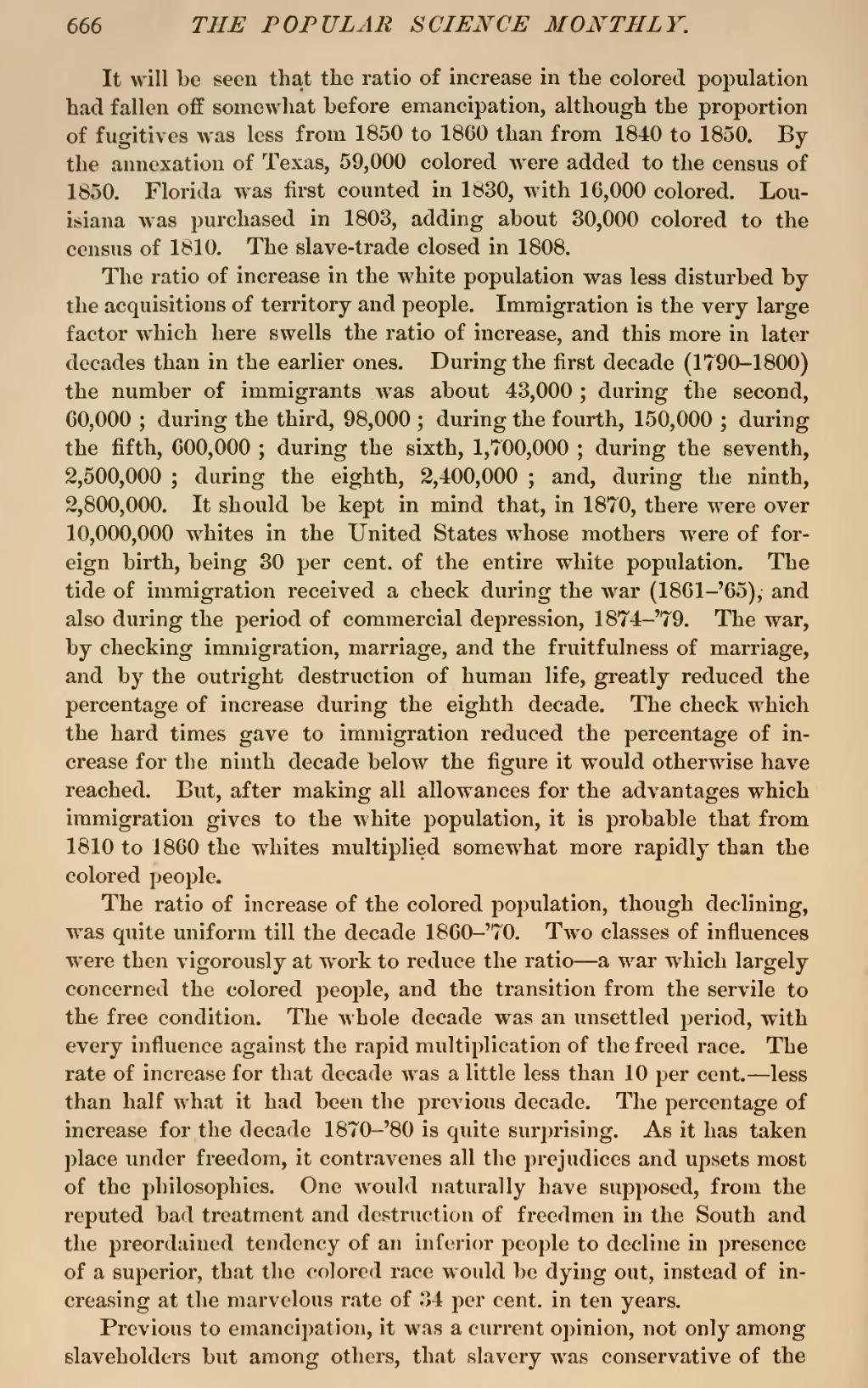It will be seen that the ratio of increase in the colored population had fallen off somewhat before emancipation, although the proportion of fugitives was less from 1850 to 1860 than from 1840 to 1850. By the annexation of Texas, 59,000 colored were added to the census of 1850. Florida was first counted in 1830, with 16,000 colored. Louisiana was purchased in 1803, adding about 30,000 colored to the census of 1810. The slave-trade closed in 1808.
The ratio of increase in the white population was less disturbed by the acquisitions of territory and people. Immigration is the very large factor which here swells the ratio of increase, and this more in later decades than in the earlier ones. During the first decade (1790-1800) the number of immigrants was about 43,000; during the second, 60,000; during the third, 98,000; during the fourth, 150,000; during the fifth, 600,000; during the sixth, 1,700,000; during the seventh, 2,500,000; during the eighth, 2,400,000; and, during the ninth, 2,800,000. It should be kept in mind that, in 1870, there were over 10,000,000 whites in the United States whose mothers were of foreign birth, being 30 per cent, of the entire white population. The tide of immigration received a check during the war (1861-'65), and also during the period of commercial depression, 1874-'79. The war, by checking immigration, marriage, and the fruitfulness of marriage, and by the outright destruction of human life, greatly reduced the percentage of increase during the eighth decade. The check which the hard times gave to immigration reduced the percentage of increase for the ninth decade below the figure it would otherwise have reached. But, after making all allowances for the advantages which immigration gives to the white population, it is probable that from 1810 to 1860 the whites multiplied somewhat more rapidly than the colored people.
The ratio of increase of the colored population, though declining, was quite uniform till the decade 1860-'70. Two classes of influences were then vigorously at work to reduce the ratio—a war which largely concerned the colored people, and the transition from the servile to the free condition. The whole decade was an unsettled period, with every influence against the rapid multiplication of the freed race. The rate of increase for that decade was a little less than 10 per cent.—less than half what it had been the previous decade. The percentage of increase for the decade 1870-'80 is quite surprising. As it has taken place under freedom, it contravenes all the prejudices and upsets most of the philosophies. One would naturally have supposed, from the reputed bad treatment and destruction of freedmen in the South and the preordained tendency of an inferior people to decline in presence of a superior, that the colored race would be dying out, instead of increasing at the marvelous rate of 34 per cent, in ten years.
Previous to emancipation, it was a current opinion, not only among slaveholders but among others, that slavery was conservative of the
